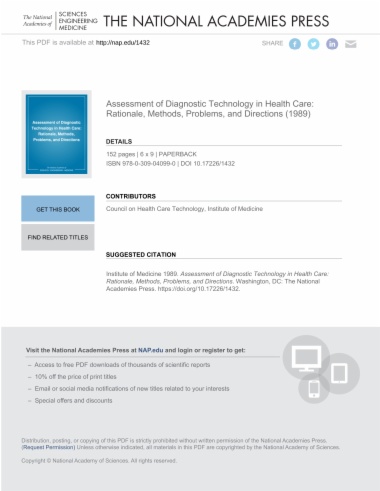

Technology assessment can lead to the rapid application of essential diagnostic technologies and prevent the wide diffusion of marginally useful methods. In both of these ways, it can increase quality of care and decrease the cost of health care. This comprehensive monograph carefully explores methods of and barriers to diagnostic technology assessment and describes both the rationale and the guidelines for meaningful evaluation. While proposing a multi-institutional approach, it emphasizes some of the problems involved and defines a mechanism for improving the evaluation and use of medical technology and essential resources needed to enhance patient care.